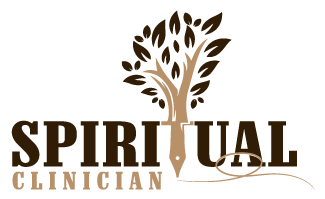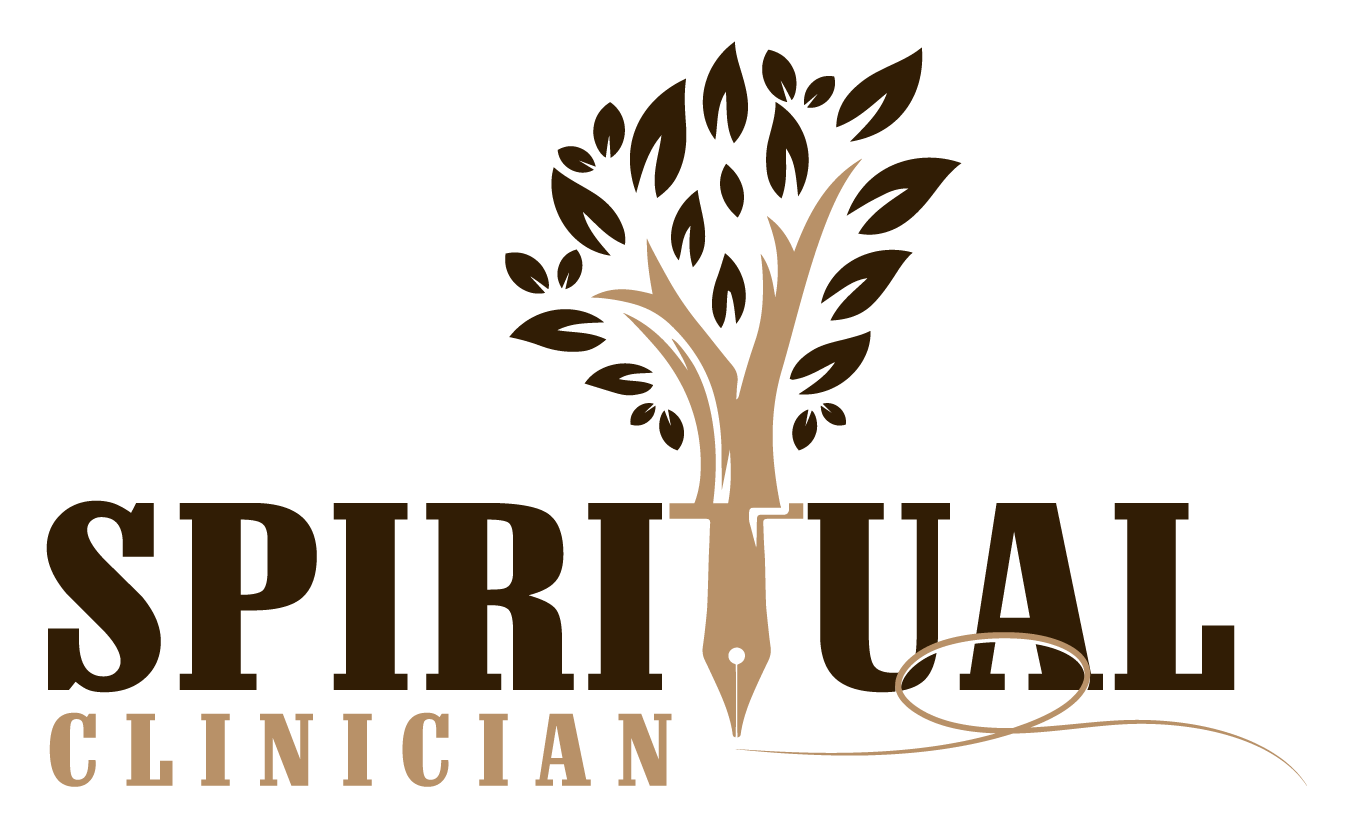Spiritual Needs are unpleasant or painful experiences of having difficulty finding meaning and purpose.
PRIMARY SPIRITUAL NEEDS
In practical terms, spiritual needs can be described as unpleasant or painful experiences that challenge the human spirit to maintain resilience and hopefulness. They generally cannot be met simply by naming them or by reassurance, and often not at all. But they can often be addressed and modified by a skilled spiritual clinician, and sometimes even by a good friend. As you might expect, spiritual needs can be acute, episodic, and transitory, resulting from a specific crisis. Or they can be chronic, debilitating and lasting for years.
Either way they frequently open up to assistance through the process of seeking health care.
The twenty-one needs are divided into four axes similar to DSM-5. A clinician can sort them out in a person by pondering four basic questions:
- What does this person need emotionally right now?
- What major losses has this person experienced that may sometimes resurface painfully?
- What religious or unique spiritual needs may be inhibiting this person’s human spirit?
- What complex personal issues of this patient may benefit from referral to another form of care?
Axis 1: Emotional Support
1 – Need to Talk
2 – Fear and Anxiety
3 – Hostility and Resentment
4 – Sadness, Discouragement, Despair
5 – Deep Hurt
6 – Empowerment
Axis 2: Major Loss
7 – Grief Support
8 – Grief Counseling
9 – Dying
10 – Life Adjustment
11 – Estrangement
Axis 3: Spiritual Practice
12 – Religious Support
13 – Spiritual Validation
14 – Spiritual Counsel
15 – Guilt/Regrets
16 – Instruction
Axis 4: Spiritual Practice
17 – Religous Support
18 – Addiction/Mental Health
19 – Love Life Pain
20 – Advocacy
21 – Family Conflict
Axis One: 6 Emotional Support Needs
(These statements are the practice opinions of the author of this website, a veteran chaplain who is not an authorizzed psychiatric practitioner).
It takes a specific interpersonal context for the soul to rise in conversation. Not many people talk immediately about their deepest concerns. Careful personal listening is often the only way to discover deeper spiritual issues. Bold questions often fail to facilitate further sharing by exacerbating defensiveness. Person-oriented or relationship-oriented care requires heart motivation, practiced skills, and developed patience. Nobody does it perfectly, but persistent efforts do most often pay off.
The need to talk almost always appears along with other needs that emerge reflexively through the talking. All manner of theorists have written about this phenomenon, from Sigmund Freud to Carl Rogers, to recently popular books on the value of listening. In health care settings one of the lively issues that need expression will virtually always be the health care need for which they are being treated, but that need also touches other serious personal issues being experienced prior to and resultat to the hospitalization. As person-centered or relationship-oriented care evolves, it may include attending to some of those more urgent needs as contributions to overall health.

Outcomes for Study: How often do a given number of patients 1. Talk energetically, 2. Show which emotions (anger, sadness, joy, hurt, fear, guilt/shame), 3. Show tears, 4. ISeem to reflect cognitively on issues disclosed, 5. Consider use of further helping resources, if suggested.
2 – Fears and Anxiety
Except for those who work in health care settings, everyone is a little scared of those places, and some are markedly bewildered by that milieu in addition to their trepidation over whatever health needs bring them there. Fears range on a continuum between a little apprehensive on the one hand, to frantic, painfully disordered, or paranoid on the other.
Anxiety differs from fear in that it remains unfocused and feels pervasive. Psychiatric theorist Harry Stack Sullivan once called anxiety, “Roughly equivalent to a blow on the head”, to indicate its disabling effect. Nobody knows how many of the one in five American adults that take medication for anxiety or depression could be helped by referral to counseling or psychotherapy if finances and practitioners were available. It is often a spiritual clinician that pursues that possibility for individuals first and refers it. Attempting to calm anxiety with logic and information, or even personal presence and reassurance, may be unconsciously sabotaged by parallel processes between a patient and a practitioner’s own underlying anxiety level.
Still, fear and anxiety may respond somewhat to information carefully and patiently imparted. And establishing emotional rapport virtually always enhances the learning process. Anxiety often benefits short-term from a quiet presence, patient-conveyed empathy, and gentle conversation. However anxious spiritual caregivers can increase patient anxiety.
Outcomes from interpersonal care can result in improvements in fearful and anxious patients. The following indicators could well be researched to confirm to some degree the extent to which this interpersonal care can be successful, granted that there is no comprehensive quieting of these naturally human reactions to unsettling events and crisis times.
What is the value in eliciting these responses by fearful people to interpersonal care by skilled spiritual clinicians?
1. Verbally or non-verbally expresses fear, 2. Responds to care by describing the fears as thoroughly and calmly as possible, 3. Receives basic, relevant technical and personal information patiently provided, 4. Asks clarifying questions, 5. Acknowledges anxiety as an ongoing issue, with or without mention of medication, 6. Visibly relaxes, 7. Expresses gratefulness or accepts prayer.
3 – Hostility & Resentment
Both of these stem from residual anger from being overwhelmed by hurt in either the recent or remote past. Anger is sometimes a face of inner fears. Verbal processing will help if the listener does not expect the anger to diffuse immediately with logic and information. When hostility and resentment are chronic however, as in combat, rape, child abuse or addiction, they need a different kind of extended help that may have been approached in the past but never effectively. “Deep hurt” stories wait for years and sometimes even decades for the interpersonal listening context in which they can be told. Sorting out the most significant components of hostility can be an extensive therapeutic task, while situational or functional anger can often be addressed by a calm, savvy listener.
On the other hand, virtually every patient is losing something and that angers all of us on some level. Mostly, we manage that displeasure for the sake of smooth caregiver relationships. When a patient or family member doesn’t restrain her/himself it is likely because s/he can’t. Allowing a patient to express anger at his brother-in-law for example, is part of health care, though it doesn’t fit with the job description of most health care clinicians and other staff. While not directly related to the current health care need, it likely does affect healing and recovery as impinging on the patient’s attitudes and frame of mind regarding treatment.
Anger in health care runs as assessment gamut from situational annoyance to psychotic rage. Making an appraisal, or even an observation, or a guess, about where this person is on the continuum may at least provide interdisciplinary colleagues a “heads up” warning, and a concept to foster discussion about treatment plans in rounds.
Outcomes for Study: 1. Outbursts of emotion, 2. Allows caregiver’s quiet, persistent presence, 3. Articulates a/the reason for the current upset, 4. Discovers chronic anger that flares in specific situations, 5. Subdues emotions with show of authority (a savvy physician, gathered staff members, or a security officer), 6. Visibly calms down.
4 – Sadness, Discouragement, Despair
The continuum here, as resulting from the reason for seeking health care, runs from: Missing a pet, to considering termination of dialysis, to suicidal depression. Whatever has discouraged this person may lie so deep within her that it can only be surfaced with careful listening, like from a friend or a therapist. A spiritual clinician considers taking careful listening seriously, from herself or a more available helper, before rushing to pharmacology for depression, which may prevent the healing to which savvy, focused and calm conversation and referral might lead.
The concept of grief has accelerated the process of caring for a great deal of the sadness seen in hospital situations. Sadness is often a component of the complex array of feelings experienced in normal grieving, and can often be ameliorated even by conversation, and received verbal reminiscences of the lost one, validation, focused empathic questions, and conveyed empathy.
Outcomes for Study: 1. Identifies the reason for sadness upon query, 2. Expands on the history of the sadness, 3. Show tears, 4. Receives grief care if indicated, 5. Receives touch, 6. Receives quiet presence, 7. Expresses gratefulness.

5 – Hurt (to the Core)
Hurt is probably the most neglected feeling, not even recognized by many people in themselves. We tend to identify it as anger, which generally follows it. Or it is expressed as fear, of being hurt again. A given patient’s hurt regarding the care she is receiving or her caregivers’ treatment of her, lies somewhere on the continuum of actual hurt between: a nurse’s snub to a fatal iatrogenic caregiver mistake.
Distinguishing hurt from self-pity can be difficult and perilous. As a result, it is generally not addressed in health care settings. Yet grieving is human, healthy and normal, while self-pity is self sabotaging and usually flies out of the awareness of the hurt one. Self-pity can be highly self-destructive to some people. Addicts for example, carry an unconscious pool of resentments within them that can serve as a segue to self-pity, a rationalized reason to get high one more time. Calling sadness by the name self-pity generally results in quick anger, a fairly solid indicator that it is indeed self-pity rather than grief–an approach only rarely recommended in health care settings.
Hurt that is devastating to the human spirit, from such horrible mistreatment as combat, rape, torture, or child abuse of any kind, most often results in spiritual and psychological pathology difficult to treat and even to refer. But lesser hurts generally respond to acknowledgment as significant by an empathetic listener.
On the other hand, unearthing a chronic deep hurt as mentioned above, constitutes an opportunity for the bearer of that hurt to unload more of it, with the current caregiver or with a referral resource either during or after hospitalization.
Outcomes for Study: 1. Verbally hints at a history of being seriously mistreated, 2. Responds to conveyed empathy with details of the event, 3. Shows emotion in the telling, 4. Considers referral for further care, 5. Expresses gratefulness or requests prayer.


6 – Empowerment
Highly dependent people adamantly or indirectly resist empowerment of any kind. But regression remains a temporary feature of many more stable patients, taking refuge in an earlier, more helpless developmental stage of life. Some victimized tones of helplessness can be assisted by gentle inquiry into the person’s past experience of caring for himself in difficulty. Serious dependence erupts into outright anger with the mention of self-pity. The anger can then be easier to stomach than the victim mode. There may be risk of legal action.
Outcomes for Study: 1. Whines, complains, or requests emotional help, 2. Accepts caregiver interruptions of self-pitying stories, 3. Non-verbally expresses appreciation for presence, caregiver-imparted knowledge and quiet understanding, 4. Discusses his/her coping, including way(s) s/he has previously coped with difficult situations, 5. Mentions or explores options, 6. Expresses increased awareness of the limitations of health care systems, 7. Reduces whiney tone.
Axis Two: 5 Major Loss Needs
7 – Grief Support
Needing to begin incorporating into your life the new realization that somebody or something important to you is suddenly gone, or about to be, constitutes a universal spiritual need. Rendering us clearly powerless to stop the loss, those times make the fact of transcendent power obvious. The personal processes that tend to follow major loss, now collectively called grieving, is never complete. Facilitating grief is an art all its own that virtually any caregiver can learn.
Outcomes worth studying: 1. Visible emotional expression, 2. Quiet reminiscing, 3. Religious practice or ritual, 4. Communal support observed, 5. Love expression, 6. Efforts at reconciliation, 7. Realistic thinking/planning.
8 – Grief Counseling
Health care settings tend to raise to consciousness previous major losses, with their accompanying warm, sad, loving and disappointing memories. Needing to share feelings and reminiscence about a major loss experienced long ago, calls for a good listener to recognize, and then respond with gentle use of a few focused, compelling questions, giving the impression that endless time is available. Such remedial grieving generally takes no longer than 20 minutes and provides a service that is not likely to be forgotten.
Outcomes worth studying: 1. Mentions a previous loss, 2. Expresses Emotion, 3. Receives Validation, 4. Shares Reminiscences, 5. Cries while sharing, 6. Considers referral, 7. Expresses gratefulness or increased hope.
9 – Dying
Our human need to accomplish final goodbyes and “last things” in preparation for our own death, can be appreciably met by at least one savvy helper who has learned to (a) artfully initiate conversations in which that process can begin, (b) listen carefully and personally (c) patiently bring wisdom and perspective to conversations about dying and the person’s life. Such people now populate the modern fields of hospice and palliative care. Often patients are not capable of any of this near the end of their lives. Better to address these issues earlier.
Outcomes: Openly discusses an “end of life” issue, such as 1. Afterlife, 2. Relationship with the Divine, 3. Pain control, 4. Reconciliation with someone, 5. Life review, 6. Forgiveness of sins/regrets, 7. Religious membership/practice, 8. Concern for survivors, 9. Bereavement of other deceased, 10. Organ donation, 11. Burial arrangements.
10 – Loss Adjustment
Needing to adjust to irreversible negative changes in appearance or function, e.g., from accidents, strokes or attacks. Interpersonal care of this need, individually or in groups, helps a person to begin developing a new and necessary style of living. Care begins with empathic connection, both verbal or non-verbal, as soon after the loss as possible. It then proceeds with personal presence over time, and timely providing of new perspectives.
Outcomes to hope for: 1. Mentions need to adjust, 2. Shows feelings about the situation, 3. Can discuss some implications of the change, 4. Considers options for adjustment, 5. Appears to be a bit more hopeful.
11 – Estrangement
Illness or injury often brings back to consideration open personal conflicts that have distanced and even estranged people from one another. This need occurs when patients and family members seek to re-unite with specific people who have either felt or caused major personal hurts in the past. A spiritual clinician can serve as a transitional facilitator of reconnection, and when possible, healing of previously strained or estranged relationships.
Outcomes for study: 1. Mentions an estranged relationship, 2. Talks openly about “what happened”, 3. Shows feeling, 4. Agrees to receive contact, 5. Agrees to initiate contact, 6. Acknowledges having “done enough” to reconcile.
Axis Three: 5 Common Religion and Spiritual Practice Needs
12 – Religious Support
Needing an experience of transcendence as positive and near. (e.g., through prayer or ritual). Care: personal prayer, calming ritual, sacramental symbol, reverent pace, and gentle assurance.
13 – Spiritual Validation
Needing to share unique ways one nurtures one’s human spirit, often not related directly to traditional religions. Care: listening, honoring and validating such beliefs as helpful in difficult times.
14 – Instruction
Needing to learn more about spiritual issues and self-care modalities. Care: Offering brief teaching on medical ethics, advanced directives, meditation, chemical dependence, sacraments, devotions, etc.
15 – Spiritual Counseling
Need to discuss spiritual questions or heal confusion and wounding by past religious or spiritual leaders. Care: Listen and provide perspective on the limitations of spiritual leadership, addressing questions about transcendence.
16 – Guilt/Regrets
Needing relief from guilt and regret from past decisions, actions, or neglect. Care: Listening, fostering disclosure of specifics of the regretful past, assuring unconditional transcendent acceptance.
AXIS 4: Ethics Confusion And Referral Needs
17 – Religious Support
Needing to better understand the complexities of the intensely difficult medical situation, with its options and limitations. Practically speaking, praying is integrating relatively intense emotion with words addressed to an image of transcendence as personal, positive and “on my side”. Despite being addressed to a deity that is obviously not always able or willing to get us what we want, the human process of self-expressive prayer shows enough benefit to enough people that it can be encouraged as useful in health care situations. Research shows that an overwhelming percentage of patients would even like their physician or nurse to pray with them on occasion.
Religious support is not limited however, to the classically central action of prayer. Religious geniuses like Moses, Jesus, Mohammed, and Buddha have also inspired sacraments and other rituals, regular practices, solid beliefs, and ways of wording values that can be promoted in health care settings wherever a given patient is familiar with and open to them.
This need spans a continuum between: Adamant Atheist and Religion Addict (the extremes are about equally difficult to help. The middle is almost always accessible.)
18 – Addiction/Mental Health Concerns Needing assessment for problem drinking/drug use or mental health care, regarding either initial diagnosis or relapse (Includes family coping, e.g., Al Anon).
19 – Love Life Pain Needing understanding and possible referral for hurtful behavior in an intimate relationship.
20 – Advocacy Needing to resolve feelings of being neglected — not receiving appropriate care.
21 – Family Conflict Needing (yearning for) improved family cohesion, agreement or understanding.


